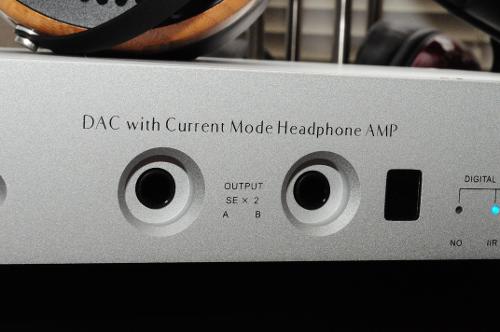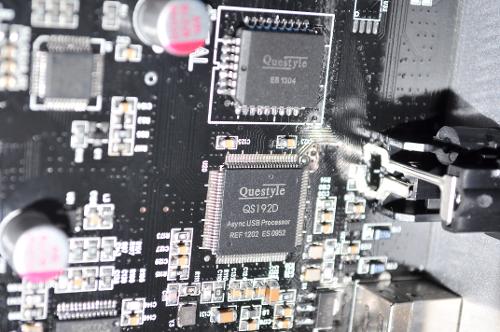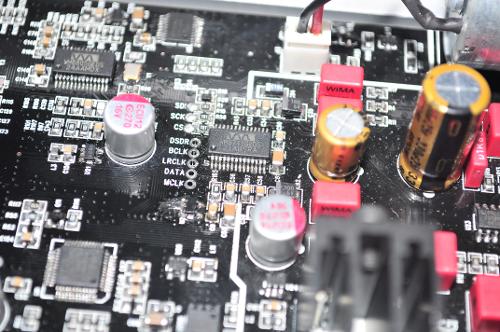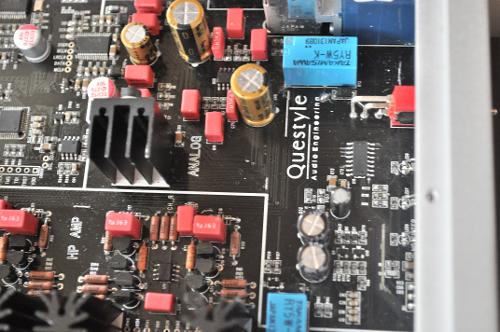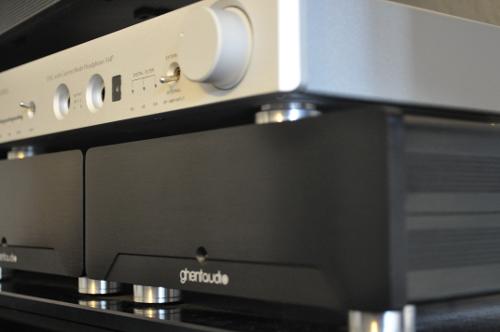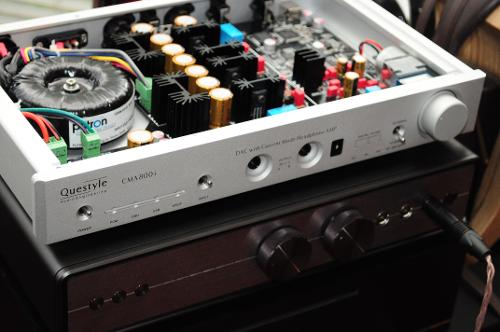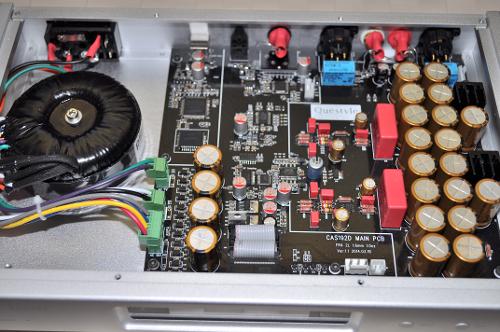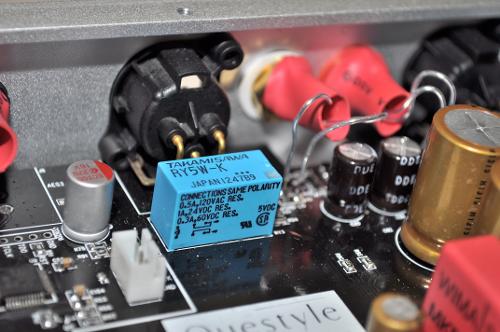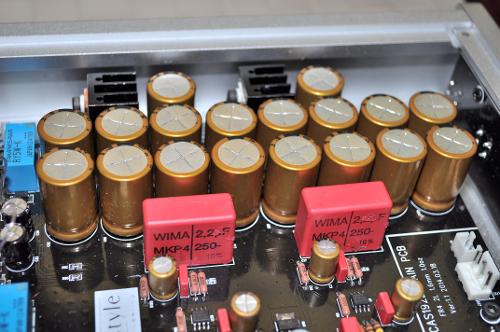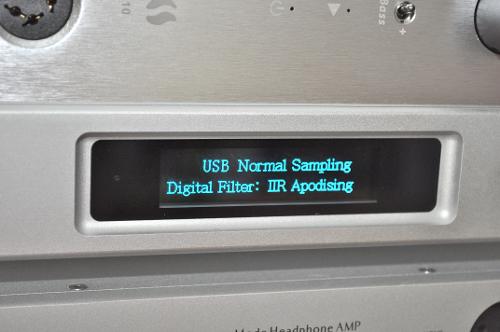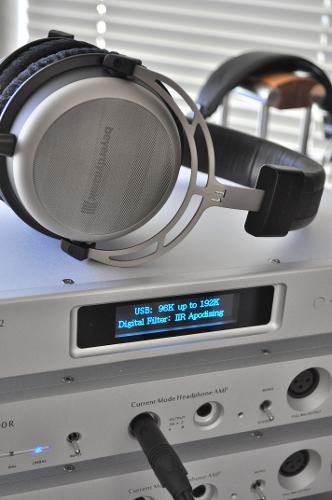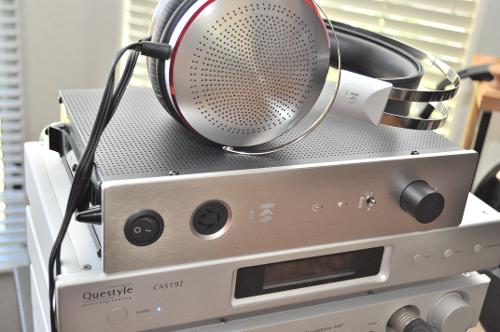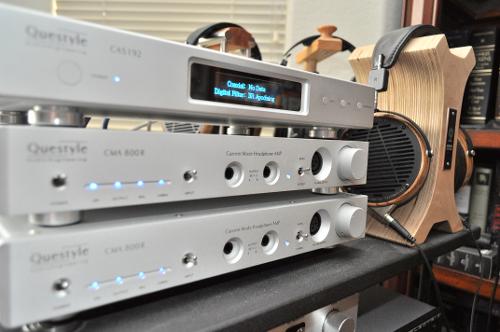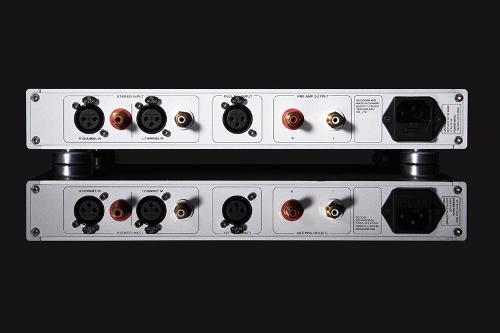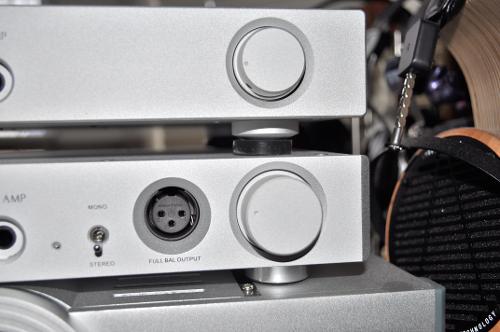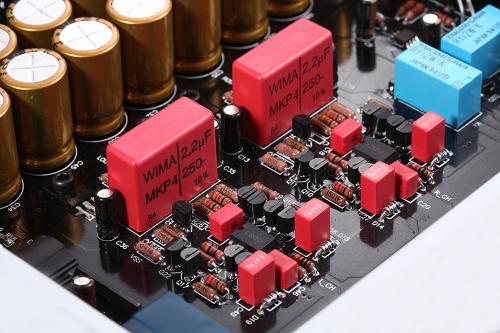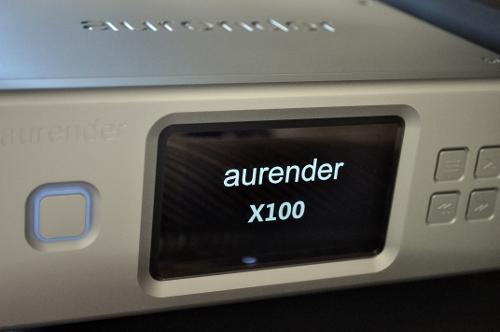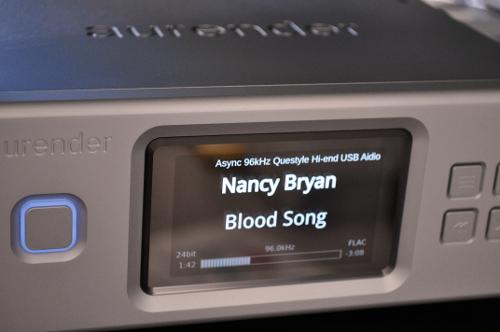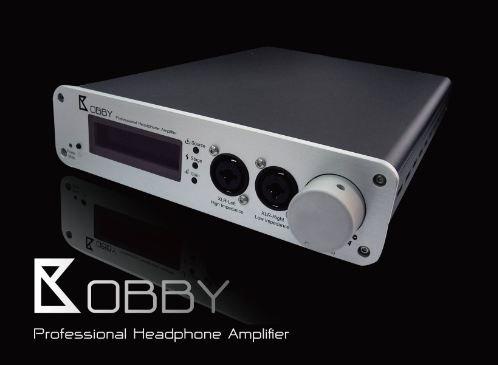
I love to see well-established audio companies with a solid lineup on offer. Someone like Parasound, Sennheiser, or PSB will almost always have their bases covered with budget, midrange, and fairly expensive models to choose from. That's great because it allows access for all sort of folks, regardless of budget. But you know what I love even more than that? Growth. Seeing a company, new or old, making continual improvements, is just great to see. Think RHA or Philips - neither is firmly established as a market leader at this point, yet both churn out some very competitive models.... and they just keep getting better each time. That's what I like to see.
Another such firm is Hong Kong based Lear. They specialize in custom in-ear monitors, though other things such as universal monitors and headphone amplifiers are also on the menu. I've previously evaluated their entry-level LCM-2b custom IEM and later the LCM-5, finding both to be very respectable in their particular price categories. The LCM-5 in particular has always seemed like a somewhat under-appreciated design, rivaling many of the flagships from other brands and only falling short compared to the very best - which tend to cost more anyway.
Well, Lear is back once more with an even better design - the LCM-BD4.2. At $1400 the BD4.2 takes aim at the best on the market from JH Audio, Noble, Ultimate Ears, and others. Not just another "me too" design or an increase in drivers for the sake of driver count, the BD4.2 is very high-tech in both design and execution - perhaps more so than most any other CIEM on the market today. Let's take a closer look at what makes it so special.
Design
"BD4.2" doesn't necessary sound as catchy as V6 or Miracle, but it does have some rhyme and reason behind it. Can't say the same for some others like JH13 (arbitrary number salad). The BD stands for Balanced and Dynamic, which describes the hybrid nature of the design. The 4 means quad balanced armature drivers, while the 2 is for the dual dynamic drivers on board. In the land of very few hybrid designs, this is a standout offering - the closest competitor is Unique Melody's Merlin which uses quad BA drivers with a single dynamic handling low frequencies. Merlin is a very enjoyable CIEM but doesn't really aim as high as the flagship Lear, in either price or execution.
BD4.2 uses dual armature drivers on highs and two on mids, with the dual 6mm dynamic drivers handling low frequencies. A three-way crossover and four individual sound bores keep frequencies separated until they reach the ear canal, preventing them from interacting while en route. Lear uses an acoustic low-pass filter which is extremely uncommon. The only other model that comes to mind is Shure with their latest SE846 flagship. I recall Shure making a huge deal of this feature, calling it "groundbreaking" and promising "previously unattainable" deep bass response. Lear also makes use of metallic sound bores for the mids and highs - Japan's FitEar does the same, claiming improvements in high frequency response as well as a more consistent performance due to tighter tolerances. Internally, the sound tubes for the bass drivers are much longer and more curved than other CIEMs. The only other place I've seen this is with the JH Audio FreqPhase models, so I can only assume it has a similar design goal in terms of phase. And those tubes are incredibly small in diameter, which is said to maintain control and accuracy - this same trick is used in the top models from Noble Audio. It could be that these features constitute the acoustic filter - there's not enough info given to really know for sure, and I assume Lear wants to keep their secrets to themselves. Lastly, we get the adjustable bass system. This is accomplished by a tuning knob and a special (included) screwdriver-like tool. The dynamic drivers on bass duties are the only ones influenced by this adjustment, and I'm guessing it has to do with opening the size of the vent hole which is conveniently placed on top of the CIEM shell.
Go ahead and read that last paragraph again, keeping track as you go of the number of uncommon design cues being implemented. As I said before, this may be the most technically advanced CIEM currently on the market, even if most people don't know about it.
The initial design had the vent hole on the faceplate like most other dynamic CIEM designs, and you'll still see pictures of that design on Lear's website. I'm glad Lear discovered the alternate location. One of the dynamic drivers appears to sit very close to the hole, almost as if to block it completely.... but when I look close I see a small gap between them. This is probably deliberate to help keep funk out of the sensitive internals. This also keeps the faceplate clean and allows for more design options which otherwise probably wouldn't work as well. Opening and closing a vent for bass adjustment is reminiscent of the Mr Speakers Alpha Dogs, though in this case it seems easier to do. I would like to have some type of numbering system or other way to insure that both sides are dialed in equally. But with trial and error it is doable. Even so, I don't think Lear intends us to change this every few songs. It's a moving part, and all moving parts eventually fail. So I'd think the goal is to allow a user to find their ideal setting and then, for the most part, leave it there. On the plus side, I didn't notice any lack of isolation compared to my other CIEMs. My particular Unique Melody Merlin has compromised isolation due to the vent, though to be fair most other Merlin owners tell me they don't have any issues.







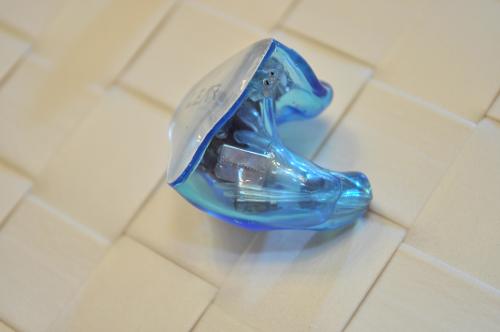
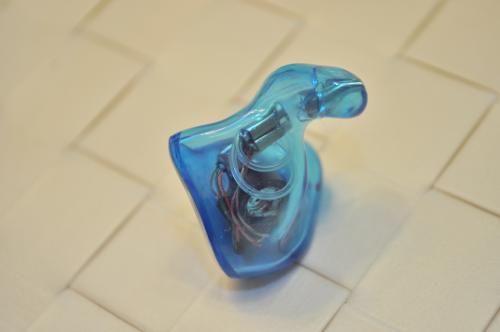
Looks
Lear offers a fairly large number of aesthetic options. They don't have the most robust customization out there but I'd call it "slightly above average" in that regard. Build quality has always been excellent in my prior Lear models and the BD4.2 is no different - I got mine in a transparent light blue with titanium faceplates, and it looks pretty damn nice. This is the same scheme I used for my Unique Melody Platform Pure 6, and I'd say Lear manages to match UM in build quality - a compliment as far as I'm concerned. Other choices include True Texture (looks like carbon fiber), denim, real wood, glitter, and more. Of course, plain designs in solid or translucent are always available, and we get a choice of three zones for different colors - the tips, the shell, and the faceplate. All in all I think Lear offers solid enough build quality and sufficient customization even if they don't quite lead the field in either area.
Accessories
The cable Lear uses is one of the best stock cables I've experienced. They call it the C2 and also sell it separately for around $90, in case someone wanted to upgrade their existing CIEM cable. It's an SPC design (silver plated copper) using high quality materials with a focus on flexibility. Indeed, this is among the most flexible CIEM cables I've tried, short of the ultra-thin Linum cables. It reminds me a lot of the cable being used by Noble Audio, which is another of my favorites. Lear offers the C2 in clear or black, and claims the clear version has a special treatment to avoid oxidation - which happens in most every stock clear cable I've owned, and leads to an ugly green appearance. So far my clear C2 has held up like new despite several months of rather heavy use. Like the Noble cable, it does tend to become tangled rather easily, but I have a system to avoid that (winding around my fingers before storing it away) so I don't mind. The more traditional "Westone style" that most brands tend to use is just as tangle-prone anyway. Lear also offers the alternate MMCX connection style, though I'm not really a fan of that type as I had trouble with it on my old LiveWires CIEMs.
Aside from the C2 cable, Lear gives us a fairly nice presentation: quality Otter Box brand waterproof case, user manual, soft pouch, cleaning tool, screwdriver, cleaning cloth, and a shirt clip. This is more than we typically see from other brands, and helps with the feeling that Lear cares about the total user experience.



Universal version
What's that? A universal variation of the LCM-BD4.2? Yep, Lear apparently sees the writing on the wall - many CIEM makers are similarly coming to the conclusion that universal options are in demand. For better or worse, people really want something they can share, resell without hassle, and not have to visit an audiologist in order to purchase. Opening your designs up to another market brings a broader pool of potential customers, which is always good when you sell a niche item like this.
Lear calls their custom models the LCM series, for Lear Custom Monitors. The universal versions become LUF for Lear Universal Fit - it started with the well received LUF-4 and continued here with the LUF-BD4.2 (like you didn't see that coming....) While the LUF-4 offered 3 flavors (permanent once chosen) in bass heavy, neutral, and bright, the LUF-BD4.2 sticks with a single version - the tunable bass system already covers any adjustments the user may desire. At $1260 shipped, the LUF model is slightly cheaper than the LCM.
Lear includes the same accessories as the custom version, plus a good selection of tips. We get several sizes of the "normal" single-flange tips, plus biflange, triflange, foamies, and what appear to be comply style. It's a fairly generous package and should allow most users to find a reasonable match. Other tips can be used as well if you happen to have a favorite. I usually stuck with the medium single flange as those are traditionally the best fit, though I did spend some time with the foamies, comply and biflange, as those all seemed to fit reasonably well. As is usually the case, each tip offers a slightly different seal and thus a different take on the sonic presentation.
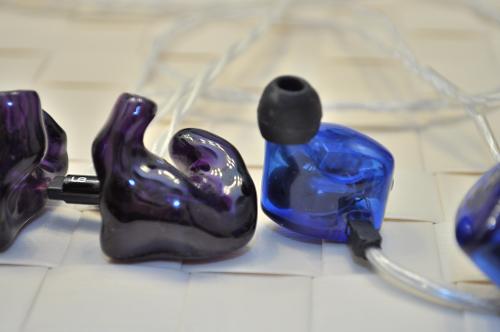
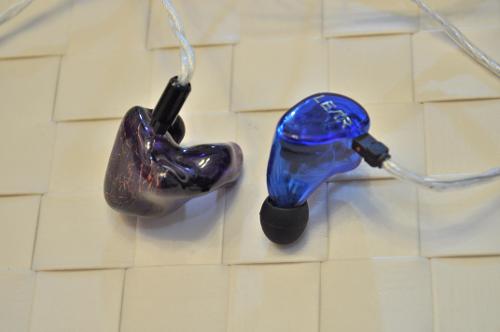





Equipment
I used the BD4.2 a lot at home but also did more portable listening than usual. At home, the system is comprised of a Surgex XU-115 power conditioner, Aurender X100L music server, Audiophilleo 1 DDC with the PurePower option, Resonessence Labs Invicta Mirus DAC, and a Violectric V281. All cabling is Cabledyne Silver Reference except the AC cables which are from their Copper Reference series. I did do some switching of amps and DACs to get an idea of how the BD4.2 responds to changes.
On the go, I used a wide variety of DAPs ranging from a humble Sansa Clip+ to a full AK240/Chord Hugo setup. Steps in between include the HiFiMAN HM-802 with IEM amp card, the Calyx M, a Sony NWZ-A17, and a Fiio X5 paired with the iQube V5. I even used an iPad Air and a Moto X to see how the BD4.2 handles more pedestrian sources.


Listening
My preference is for custom molded IEMs, so I did all my initial listening on the LCM version. I started with the bass knob at the stock setting which is basically the lowest setting at roughly 8 o'clock. I played a very wide variety of music to get a feel for what worked and what didn't. I later went back and adjusted the bass to various settings until I could figure out how successful Lear's implementation really is.
In stock form, the LCM-BD4.2 shared many traits with Sennheiser's flagship HD800. The presentation was somewhat lightweight but extremely detailed and very three dimensional. I don't know that I've ever heard an IEM sound quite so open and airy. Cymbals were rendered beautifully, with gobs of shimmer and very lifelike decay. Piano had a sweetness to it that reminded me of Adam Audio monitors with their X-ART tweeters - excellent extension, virtually non-existent grain, and a sense of ease not often achieved by traditional dome tweeters. This was a great way to listen to Chopin and Sibelius, and tons of fun with Dexter Gordon or McCoy Tyner. The laser-like clarity on the top end deftly walked the line between "accurate" and "bright". Most of the time I heartily enjoyed it but on some recordings I found it to be a bit much. Which again is something in common with the HD800. As far as "neutral" IEMs go, this is easily among the very best I've ever heard.
Still, there were times when I was left wanting for more impact. After all, with two dynamic drivers on low frequency duty, it wouldn't be unreasonable to expect a little more kick. The bass was exceedingly tight and clean, but at times lacking in convincing impact. I found myself skipping certain genres, especially classic rock (which is sometimes a little thin on its own compared to modern stuff). I also found myself turning the volume up more than usual to bring out more warmth, only to find the highs too sharp at those higher levels. Clearly I needed to mess with that bass tuning knob. Which leads me to my next point...
If there's one change I would make on the BD4.2, it would be to more clearly label the bass adjustment. I've already mentioned this but it bears repeating: as it stands, there's a vague graphic which makes it clear whether I'm turning the bass up or down. But it doesn't really help when trying to precisely match one side to the other. To make matters worse, only my universal pair, and not the custom set, has this graphic - presumably an oversight when my demos were made. Even so the graphic is not all that helpful. Perhaps a numbering system would work, or even just dots so I could know exactly how far I've turned it and match both IEMs evenly. This would be an easy fix going forward and I hope Lear can see the benefit in implementing it.
Anyway, I settled on a moderate setting about halfway between minimum and full blast. I rambled through various classic rock favorites from Moody Blues, Hendrix, Traffic, and of course one of my all time favorites, King Crimson. The sonic character was now distinctly more weighty, with excellent low end extension and some real thump taking place... when appropriate, of course. I also had fun listening to somewhat newer (but still not "new") bands like Soundgarden, Pearl Jam, Stone Temple Pilots, Smashing Pumpkins, and Eloy - many of whom have discographies spanning several decades by now. Eloy actually started in the early 1970's and their last album came in 2009, bridging the gap between these two categories - somehow I missed them completely until their last few releases, so I tend to think of them as a newer band even though that's not true at all. Again the extra low frequency energy gave a real sense of impact, imparting a more dynamic, musical experience as compared to the earlier setting. This made it much more comfortable with low-volume listening, and I no longer struggled with brightness.
I later went all the way up to the max bass setting and was surprised to hear it did not unbalanced the rest of the spectrum. The bass gets positively massive and frankly way too much for my tastes, but even so it doesn't intrude where it doesn't belong. This has some serious potential as a basshead CIEM, though for some reason I assume the target market there will want a smoother, more forgiving presentation as with the Noble 5C. Maybe I'm wrong. The takeaway here is that Lear really succeeded with their adjustment system. It seems to have something for everyone, with no drawbacks in sight other than the previously mentioned logistical issue.
But.... full blast is just too much for me. I went back to my "middle-ground" setting because it seemed best for my preferences. I found it worked well with all sorts of music - from challengingly complex jazz by The Bad Plus to the bare-bones "To Be Alone With You" from Sufjan Stevens' somewhat under-appreciated Seven Swans, the BD4.2 generally offered a successful balance of resolution and soul. It had the requisite energy on Tiesto's "Battleship Grey" and the proper restraint on Secret by Polish jazz songstress Anna Maria Jopek. With the extra low end kick I find the BD4.2 to actually be more versatile that my HD800... and if I ever run into a situation where I feel the added lows negatively impact my listening, I can always cut some out. Did I mention I love this versatility?
Summing up the presentation so we can move on: deep, punchy bass with exceptional texture and refinement. It hits tight and clean or (much) harder if you tell it to, and never bothers the other frequencies. Midrange is what I'd call neutral - it's got a pleasing tonal weight to it without being overdone, and a clarity normally associated with a thinner, more detail oriented IEM. I'd call it "honest" if that makes any sense. Among its most exciting traits, the BD4.2 has an extremely spacious soundstage, up there with the very best available from a CIEM. It creates a sense of space that few competitors can match. And the highs? Very natural, clear, resolving, with just a slight emphasis that seems most obvious when the bass knob is turned down. It's interesting how, perceptually, the highs relax a little once the extra bass kicks in, even though I know they aren't actually changing. I don't get any sense of grain or peaks, though with the bass set to minimum the highs do sometimes end up being more prominent than I'd like. Lastly, the sound is what I'd call organic, meaning it all acts remarkably like a single full range driver despite the complex mix of BA and dynamic drivers on board. Ultimately the BD4.2 is a very precise, very satisfying CIEM.
PAIRING
I want to touch for a moment on what types of gear work best with this CIEM - it's of a high enough caliber where it really shows the differences between sources, much like an HD800 (there's that comparison again). I had a great time using it with both desktop and portable systems but I notice it's pretty brutal in exposing poor sources. I tried it with my Moto X Android phone and the result was noticeably flat and lifeless as compared to even a humble Sansa Clip+. I also concluded that even with a solid desktop system, the BD4.2 excelled at showing off recording quality as well as format weaknesses. So lossy streaming from Amazon Prime Music (256Kbps MP3) was pretty much off the menu, and Rdio (320Kbps AAC) was acceptable if not quite spectacular. Lossless streaming from Orastream and Tidal was as good as an actual CD, meaning the key factor then became the recording/mastering itself. A modern loudness-wars era pop track won't be too impressive even when played on a quality setup, so if that's your main diet you can look elsewhere. On the flip side, DXD material available from Promates.com were nothing short of breathtaking, as were the many excellent recordings I tried from NativeDSD.com. On the DXD release of Carl Nielsen's Symphony No. 4 (as played by the New York Philharmonic) the timpani battle is truly something to behold - the BD4.2 handles it with seemingly effortless poise, showing that dynamic drivers can be every bit as fast as their armature counterparts. The DSD release of Britten's epic War Requiem culminates in the beautiful "Libera me", with the Lear in-ear monitors just oozing emotion. These types of releases are a bit pricey, but the performances are stunning and the result is sheer ear candy through quality equipment.
I have to mention that NativeDSD has a sale going on through January for 15% off - use code "2015-15off" and grab a few things. Most every new DAC boasts DSD capabilities so why not take the format for a spin? I find it to have a sense of ease not usually found even with hi-res PCM, and with NativeDSD you can be sure you get true DSD from DSD masters, complete with metadata. I simply can't recommend them highly enough. Sure, the format still caters to a specific type of music at the moment, but I'd challenge you to step outside your comfort zone and give it a shot. You'll be glad you did!
That said, one can simply grab some reasonably good recordings in 16/44.1 FLAC format, play them from a humble Sansa Clip+ or Fuze, and the result is still pretty impressive. And it only gets better from there - the $299 Sony NWZ-A17 made a particularly good match without breaking the bank, and of course the Calyx M and AK240 were even better... as they should be for the price. My favorite portables ended up being the Calyx, the HM-802, and the Fiio X5 paired with the new iQube V5 (review coming soon) as they all had a somewhat more musical, organic tone compared to the slightly crisper AK240 or Chord Hugo. Those still worked well (especially for resolution junkies) but for my tastes the top end on the Lear doesn't need any extra zing.
At home, I had similar results. The BD4.2 favors a very controlled or even slightly dark treble presentation as compared to more lit up sources. Aurender's new FLOW, paired directly with their X100L music server, handled the job perfectly, as did the Parasound Zdac V2 feeding a NuForce HA200. You don't need a ton of power to drive these, so it's more important to have a solid grip even at low volumes. Here big amps like the Questyle CMA800R or Auralic Taurus don't fare as well, with their gain more suitable for full-size models. The usual caveat about needing a low output impedance definitely applies here.... the 10 ohm output of the Zdac V2 amp section does some weird things with the frequency response, and not for the better. A 2 or 3 ohm output impedance won't be a dealbreaker but I wouldn't go much higher than that - this is a really complex multi-driver setup and that's just asking for trouble.

COMPARISONS
Lear's own LCM-5 is a very good CIEM and I still rather enjoy it. But the BD4.2 makes it sound a little primitive in comparison.... which is a big deal because, again, the LCM-5 is no slouch at all. The BD4.2 keeps a similar signature (depending on bass settings of course) but seems more refined in the treble, leading to less aggressive highs but no loss of apparent detail. In fact I think the newer model digs even deeper into the musical landscape - it just does so in a smoother, more confident manner. The LCM-5 has somewhat more forward mids which makes it jump out as being more direct and energetic. I initially thought that might be an advantage but after a short time I concluded the hybrid was more natural sounding, more true to the actual musical event. Bass on the LCM-5 is great if not quite on the level of heavy hitters like JH13 FP - BD4.2 kicks it up more than a single notch, showing Lear can truly compete with world class competition. LMC-5 is still a very good CIEM but falls just short of the best in a few areas, while BD4.2 is truly reference caliber.
Speaking of the JH13 FP.... I find it similar to the new Lear in a few ways, but different in others. Both have heaping amounts of sparkle up top. Both image like crazy, both offer a very convincing soundstage experience. The JH13 FP has some extra kick which can be matched by turning the Lear just a bit beyond half way on the bass knob. Interestingly, I don't notice huge differences in bass quality between the two models, despite them using very different approaches for drivers. The Lear may be a tiny bit more articulate and if pressed I'd call it the winner.... but the difference is small. For the most part both do an exceptional job. Where they part ways is the transition from mids to highs. JH13 has some extra upper midrange energy, making it more aggressive and jumpy. The Lear is more mellow in that respect, but counters with a little more air in the highest registers. This results in the unusual situation where the Lear is more laid back in some ways, yet more bright in others, depending on the music being played. For the most part I'd call the BD4.2 a more neutral, reference sounding IEM, especially if we back off on the bass tuning. Both are extremely enjoyable but I find myself reaching for the Lear more often lately - high praise indeed.
Lastly, the Unique Melody Merlin, which could be logically considered a competitor due to the hybrid design. Well, logic or not, I don't really see them as competitors - the Lear is in another bracket entirely. It simply outdoes the Merlin in pretty much every meaningful metric. I love my Merlin, don't get me wrong, but this is another situation (like the Lear LCM-5) where direct comparison makes the BD4.2 sound that much better and leaves the competitor sounding a bit worse than usual. Again, this is high praise, and not necessarily something I saw coming. A welcome surprise I suppose.
UNIVERSAL SOUND
I have to say I'm not really accustomed to universal IEMs these days. I was a regular user back when that's mainly all you could get - I had the Shure E500 and the UE Triple Fi when they first came out, and later the Westone UM3X. These seemed like big purchases back then (if only I knew how much I'd be spending in the future....) and they sounded great for their time. But I never quite got into the comfort of any of them. Westone was probably the best for my ears, but it still caused me discomfort as time went on. I could do a half hour no problem, but 45 minutes or an hour was pushing it. Throbbing ear canals forced me to give up my listening if I tried going much longer than that.
Now that I've become totally reliant on custom IEMs, I find myself unable to do even a half hour with universals. 20 minutes is about my limit. Perhaps I could probably do longer if I used them exclusively and built up a tolerance. But really.... no thanks. Anyway, the LUF-BD4.2 is an interesting universal in that the shape doesn't seem quite as user friendly as other models. It's probably due to all the drivers and technology packed inside, but these aren't small by any means - they actually aren't much smaller than the custom molded version. I have fairly large ears and the LUF still doesn't fit all the way flush. It's not as goofy as the UE TF10, but neither is it low profile like a Westone or other modern designs. This meant I could listen at home for 20 minutes at a time, but I didn't really leave the house with them at all. The last universal CIEMs I tried were the Aurisonics ASG-1 (which had an angle on the nozzle that didn't agree with my ear canal) and the Noble 6 (which was so small that it practically disappeared into my canals). Neither of them worked perfectly for my ears, which again goes to show how good custom molded IEMs are for my particular needs.
Anyway, the LUF-BD4.2 was interesting in that it seemed more tip dependent than most any IEM I've tried. Performance levels approaching the custom version were elusive - I thought I heard it a few times, but for the most part there were issues. Sibilance, flat soundstage, muffled highs, boomy bass..... each set of tips would solve one problem but introduce another. The tips that seemed most comfortable tended to be the worst as far as sound quality, and vice versa. One of my favorite aspects of the custom version - the huge, three dimensional presentation - seemed to be consistently smaller no matter what tips I tried. Perhaps with different ears I could have made it happen but in my case it simply wasn't meant to be.
In the end I wasn't sold on the universal version as it pertains to MY particular ears. There's lots of potential there - I did get brief glimpses of greatness - and I wouldn't take this as a blanket evaluation. It's simply a bad match on my part. The nature of a universal means hopefully one could try them out before committing to buy, making sure the fit is not an issue. If one happened to get a good fit, this could end up being a really good universal after all.
CONCLUSION
Lear has a real winner on their hands when it comes to the LCM-BD4.2. The name is a mouthful to be sure. Get past that and you've got yourself a marvel of advanced IEM design, perhaps beyond anything else on the market right now - this is certainly not a case of merely adding more drivers and bumping the price, which is a charge often leveled at new flagship releases.
Does that make it my favorite CIEM? It's definitely in the running. Honestly, I tend to prefer the warmer, smoother sound signature of the Noble Kaiser 10, much like I prefer the LCD-3 to the HD800 most of the time. Yet I recognize there are things the HD800 (and BD4.2) can do that are simply better, making them the preferred choice in some instances. If your sonic preferences lean more towards the analytical, detailed side of things, or if you already love the HD800 and want a somewhat similar presentation in CIEM form, the LCM-BD4.2 should absolutely be on your short list of contenders. And if you've struggled to enjoy the HD800 signature, wishing it was slightly less bright or thin..... the BD4.2 should really be on your list. I can't think of another CIEM that better captures this essence. Very enthusiastically recommended!








